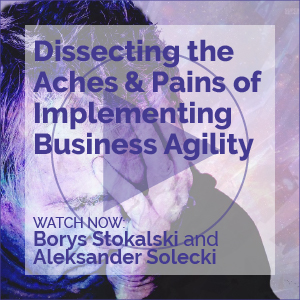Getting the Customer Journey Right
Getting the Customer Journey Right
Want Happy Customers? Make Your Employees Happy — An Introduction
Digital Shift and EA: What Does It Take?
Digitalization may be defined as using IT to improve the performance of people in organizations. These improvements may take place, for example, in business operations, the customer interface, employee experience, informed decision making, or in the form of new business models, products, and services. The digitalization of business operations involves improved business processes, cost savings, and faster lead times.
Blockchain’s Value Proposition
The business value of blockchain technologies emerges in the form of business metrics, such as transaction efficiency, cost savings, and reduction of fraudulent activities, among others. In this Advisor, we explore some of the main drivers of value and potential applications beyond cryptocurrencies.
Separating Myth from Reality in Software Projects
Getting the Most Out of Corporate/Startup Collaboration
Your Path to BaaS: To Build or Buy?
Grooming the Path to Data Governance and Quality
Successful Digital Transformation: Q&A with Johan Treutiger
In the Cutter Consortium on-demand webinar “4 Key Questions: What You Need to Consider for Successful Digital Transformation,” Cutter Consortium Senior Consultant Johan Treutiger addresses four key questions over four key transformational areas your organization should consider to successfully achieve a digital transformation. In this Advisor, we share four questions asked at the end of the webinar that may help you in your transformation efforts.
Service Providers Need a Reality Check
Want to Improve Employee Engagement? Remove the Boss!
The Workplace Culture You Want
Lacking and Longing in the Workplace: What Undermines Employee Happiness?
Lacking and Longing in the Workplace: What Undermines Employee Happiness?
Use a Common Language to Break Down Silos
Want Happy Customers? Make Your Employees Happy — Opening Statement
Want Happy Customers? Make Your Employees Happy — Opening Statement
Moving Forward in 2020: Technology Investment in ML, AI, and Big Data
Moving Forward in 2020: Technology Investment in ML, AI, and Big Data
The Cutter Edge: Softer Side of Remote Work, Lizards & COVID 19, Distributed Team Virtual Training
Navigating COVID-19 with Proactive Risk Management
Navigating COVID-19 with Proactive Risk Management
Some Tools in the Toolbox: RPA, IPA, and COVID-19
Hospitals, government agencies, and other organizations are struggling with process management and information processing issues that have been compounded by the novel coronavirus pandemic. They are turning to RPA and AI-based solutions — including smartbots and intelligent virtual assistants — to attempt to mitigate such concerns. From a market perspective, industry providers are moving rapidly to meet their needs, including offering solutions that hospitals and other organizations responding to the contagion can license for free. This Advisor explores some of the trends we are seeing to address these concerns.
Listen Up: The “Soft” Side of Remote Work Can Work
Although the technology for remote working (collaborative) has been around for 30 years, the adoption rate has been slow but steady. Now, all of a sudden, the adoption rate has shot up to almost 100%, as just about all nonessential industries are working remotely to help flatten the COVID-19 infection curve. This rapid adoption of remote working technologies has had a number of challenges.






















